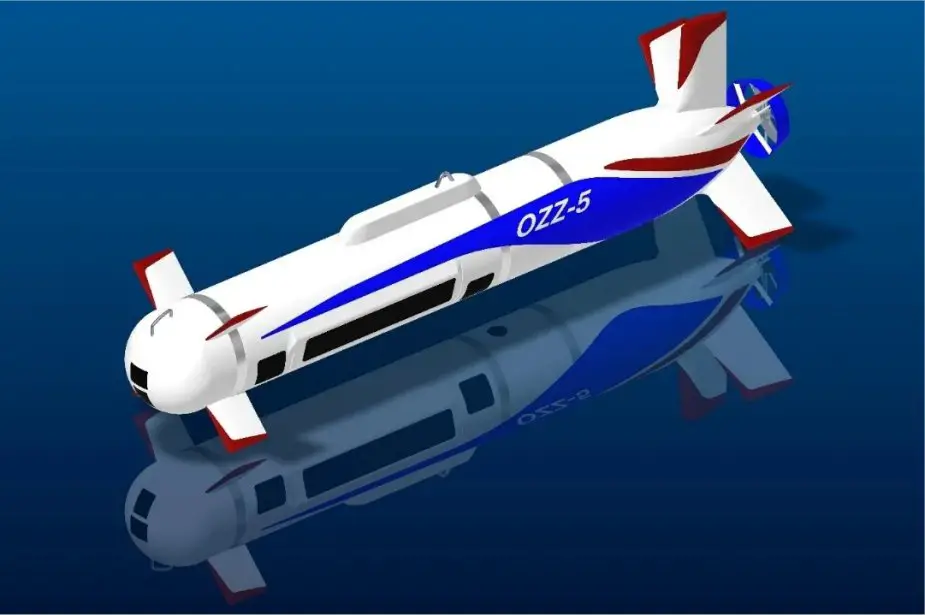Breaking news
Thales and Mitsubishi will develop new sonar technology.
According to a press release published by Thales on March 30, 2021, the French company and MHI are joining forces to develop a Dual Frequency sonar demonstrator to be evaluated at sea both in Japanese and French waters, following the signature by the French Defence procurement agency (DGA) and its Japanese counterpart, the Acquisition, Technology & Logistics Agency (ATLA) of a Defence cooperation agreement.
Follow Navy Recognition on Google News at this link
 OZZ-5, autonomous underwater mine countermeasure detection vehicle (Picture source: Mitsubishi Heavy Industries)
OZZ-5, autonomous underwater mine countermeasure detection vehicle (Picture source: Mitsubishi Heavy Industries)
Within the framework of the French-Japanese bilateral Defence agreement, France and Japan have signed a Project Arrangement for the second phase of the cooperation project consisting of the development by Thales and MHI of a dual frequency sonar demonstrator for mine countermeasures aboard an Autonomous Underwater Vehicle (AUV).
While mines or even the possibility of mines potentially threaten everyone at sea, dealing with them effectively is vital in keeping key trade corridors open and guaranteeing maritime access and force projection—this is especially important for countries with highly valuable assets or ports that have a high volume of commercial traffic. In response to the growing threat posed by bottom laid, semi or fully buried mines in coastal areas, DGA and ATLA have decided to cooperate in order to study the performances of innovative dual frequency sonar technology.
To achieve this, both countries have chosen to trust MHI and Thales, who share technological excellence and complement each other, strengthening through this agreement their continuous and successful collaboration. As a world leader in mine countermeasures with over 300 mine-hunting systems in service worldwide, Thales will provide its recognised expertise in sonar processing as well as its latest generation High Frequency synthetic aperture sonar, SAMDIS, with multi-aspect capability. MHI on its side will provide its Low-Frequency synthetic aperture sonar and the OZZ-5 AUV.
The smart integration of the High Frequency & Low-Frequency sonars, coupled with a combined automatic detection and classification function, will not only provide capability and performance enhancement into a single solution but will also mutually benefit each sonar’s processing and imaging. This will result in a unique autonomous mine countermeasure system capable of detecting, classifying and localising all types of mines (from fully buried mines to ground mines).
This agreement kicks off a 5-year project for design, development and integration of the dual frequency synthetic aperture sonar processing, and at sea experiments (in Japan & in France). This is the materialisation of years of long cooperative efforts between the DGA, ATLA, Thales and MHI to jointly build a project that satisfies both French Navy and Japanese Maritime Self-Defence Force requirements and allows France and Japan to stay at the forefront of innovation on unmanned mine countermeasure systems.
The OZZ-5 AUV is the result of a 2018 Japanese military program to produce an AUV capable of MCM functions. The AUV is 4m long and 50cm in diameter with a continuous mission life of nine hours and he has a maximum speed of seven knots.


























